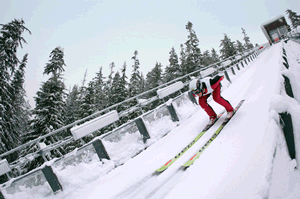
It is an event where aerodynamic forces, Newton's Laws of Motion and energy conversion combine for the ultimate thrill ride.
The athlete takes off by sliding down a huge ramp. Gravitational potential energy is quickly converted into kinetic energy. The athlete accelerates down the ramp under the influence of gravity on skis which reduce the force of friction.
At the base of the ramp the athlete launches himself into the jump by pushing off with his legs against the ramp. A force is applied down on the ramp and the ramp applies an equal and opposite force on the athlete. Click to see the launch. The athlete is applying Newton's 3rd Law.
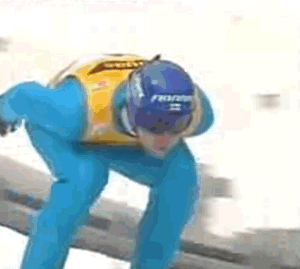
While sliding down the ramp the athlete tucks into a position which minimises the force drag, as shown on the right. This position reduces the surface area exposed to the air and minimises collisions with air molecules.
Drag opposes the movement of objects through air or water. The faster an object travels the greater the force of drag that is exerted on the object. However, the force, gravity, accelerating the athlete down the ramp is greater than the frictional and drag forces combined. The skier therefore accelerates down the ramp according to Newton's 2nd Law (F= M X a)
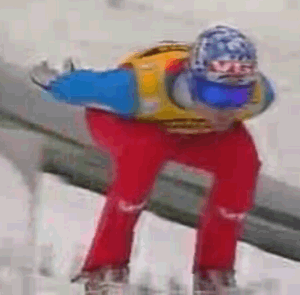
When in flight the athlete maintains a streamlined posture that reduces the drag and maximises lift. He takes on the shape of aerofoil that enables him to stay airborne for a greater length of time.
Click to see the forces.
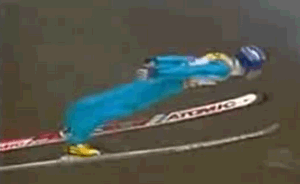
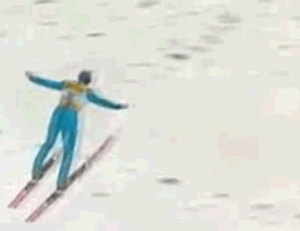
5) Which statements are true if this event was held on the moon, which has one sixth the gravitational force of the Earth and no significant atmosphere?
a) The speed generated as the athlete slides down the ramp would be greater on the Moon than on Earth
b) Once launched off the ramp the athlete would glide for a longer period of time.
c) Once in the air the athlete would not benefit by assuming a streamlined position on the Moon.
d) The force of drag acting on the athlete would significantly increase as the speed of the athlete increases.
e) As there is no atmosphere on the Moon the athlete should not be able to generate lift and therefore would stay in the air for a shorter period of time than on Earth.